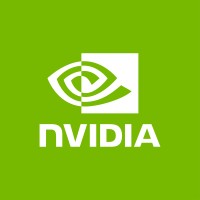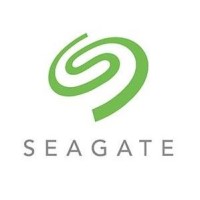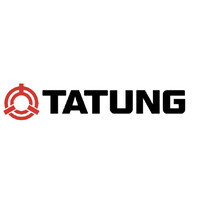
NVIDIA Company Cyber Security Posture
nvidia.comSince its founding in 1993, NVIDIA (NASDAQ: NVDA) has been a pioneer in accelerated computing. The company’s invention of the GPU in 1999 sparked the growth of the PC gaming market, redefined computer graphics, ignited the era of modern AI and is fueling the creation of the metaverse. NVIDIA is now a full-stack computing company with data-center-scale offerings that are reshaping industry.
NVIDIA Company Details
nvidia
39160 employees
3197842.0
334
Computer Hardware Manufacturing
nvidia.com
82
NVI_1117276
In-progress
Between 900 and 1000
This score is AI-generated and less favored by cyber insurers, who prefer the TPRM score.
 NVIDIA Global Score
NVIDIA Global Score.png)

NVIDIA Company Scoring based on AI Models
| Model Name | Date | Description | Current Score Difference | Score |
|---|---|---|---|---|
| AVERAGE-Industry | 03-12-2025 | This score represents the average cybersecurity rating of companies already scanned within the same industry. It provides a benchmark to compare an individual company's security posture against its industry peers. | N/A | Between 900 and 1000 |
NVIDIA Company Cyber Security News & History
| Entity | Type | Severity | Impact | Seen | Url ID | Details | View |
|---|---|---|---|---|---|---|---|
| NVIDIA | Cyber Attack | 80 | 2 | 02/2022 | NVI202626222 | Link | |
Rankiteo Explanation : Attack limited on finance or reputationDescription: America-based microchip company Nividia was recently hit by a cyber attack. The company's internal systems including email and developer tools were completely compromised. As for now, no data leak has been reported and the company has shut down its systems to contain the attack. | |||||||
| NVIDIA | Vulnerability | 100 | 3 | 4/2025 | NVI108041225 | Link | |
Rankiteo Explanation : Attack with significant impact with internal employee data leaksDescription: A critical flaw, CVE-2024-0132, in NVIDIA’s Container Toolkit has remained exploitable due to an incomplete patch, leaving AI infrastructure and sensitive data at risk. This vulnerability, coupled with a newly found Docker DoS flaw on Linux, endangers systems by potentially letting attackers steal AI models, disrupt operations, or execute DoS attacks. The initial patch provided by NVIDIA was later found to be inadequate for versions 1.17.3 and below, and conditionally for 1.17.4, making them susceptible to breaches and command execution with root privileges. The Docker issue can result in CPU usage spikes and SSH access loss, disrupting services and rendering systems unresponsive. The exposure primarily affects organizations using these tools for AI or cloud workloads, including industries like healthcare, finance, and autonomous systems. | |||||||
| Nvidia | Cyber Attack | 25 | 1 | 6/2025 | NVI435061225 | Link | |
Rankiteo Explanation : Attack without any consequencesDescription: Several Nvidia-owned web domains, including an events page, were hijacked to show explicit and AI-generated content in a spam campaign. The page was defaced and over 62,000 AI-generated articles were posted, containing incorrect or incomplete information about popular search topics. The attack also targeted NPR, Stanford, and US Government sites, including a domain belonging to the US Department of Health and Human Services (HHS). The links in the pages directed to a 'nonsense SEO spam page' stocks.wowlazy[.]com. | |||||||
| NVIDIA | Vulnerability | 50 | 6/2025 | NVI900062525 | Link | ||
Rankiteo Explanation : Attack without any consequences: Attack in which data is not compromisedDescription: NVIDIA released emergency security patches addressing two high-severity vulnerabilities in their Megatron LM large language model framework. These vulnerabilities, CVE-2025-23264 and CVE-2025-23265, affect all versions prior to 0.12.0. Exploitation of these flaws could allow attackers to execute code, escalate privileges, access data, and tamper with AI models through malicious file injection. The vulnerabilities were discovered by security researchers Yu Rong and Hao Fan and classified under CWE-94 with a CVSS v3.1 base score of 7.8. NVIDIA urges immediate updates to version 0.12.1 or later to mitigate these risks. | |||||||
| Nvidia | Vulnerability | 25 | 1 | 7/2025 | NVI556071425 | Link | |
Rankiteo Explanation : Attack without any consequencesDescription: Nvidia advised customers to ensure mitigations against Rowhammer attacks after researchers found one of its workstation-grade GPUs is susceptible. The advisory noted that researchers at the University of Toronto demonstrated a successful Rowhammer exploitation on a NVIDIA A6000 GPU with GDDR6 memory where System-Level ECC was not enabled. The company recommended customers ensure System-Level ECC is enabled on many models in its Blackwell, Ada, Hopper, Ampere, Jetson, Turing, and Volta products. | |||||||
NVIDIA Company Subsidiaries

Since its founding in 1993, NVIDIA (NASDAQ: NVDA) has been a pioneer in accelerated computing. The company’s invention of the GPU in 1999 sparked the growth of the PC gaming market, redefined computer graphics, ignited the era of modern AI and is fueling the creation of the metaverse. NVIDIA is now a full-stack computing company with data-center-scale offerings that are reshaping industry.
Access Data Using Our API

Get company history
.png)
NVIDIA Cyber Security News
How Nvidia's AI Chips will Power Trend Micro's Cybersecurity
The tools, designed to run on Nvidia's powerful AI chips, will address this vulnerability, by not only detecting potential intruders but also ...
NVIDIA Brings Cybersecurity to Every AI Factory
As enterprises increasingly adopt AI, securing AI factories — where complex, agentic workflows are executed — has never been more critical.
The Tech Leaders Adopting Nvidia’s Cybersecurity AI
Share. Share. Leading partners are adopting Nvidia's cybersecurity AI. Armis, Check Point, CrowdStrike, Deloitte and WWT adopt Nvidia's ...
NVIDIA: Agentic AI Is Reshaping Cybersecurity Defense
Published. April 30, 2025. Facebook · X · LinkedIn · Email; Print. eSecurity Planet content and product recommendations are editorially independent.
Nvidia and Crowdstrike Push Agentic AI in Cybersecurity
“By combining CrowdStrike's AI-native Falcon platform with Nvidia AI, we're working to deliver the next evolution in security operations. This ...
Nozomi integrates with NVIDIA BlueField DPUs to boost AI-driven cybersecurity for critical infrastructure
Nozomi Networks has announced an integration with NVIDIA BlueField DPUs to enhance AI-powered cybersecurity monitoring, analysis, ...
Geopolitical Truce Sparks Tech Rally: NVIDIA & Cybersecurity Leaders Lead the Charge
The Israel-Iran ceasefire announced on June 23, 2025, marks a pivotal shift in Middle East geopolitics, with profound implications for ...
Safety First: Leading Partners Adopt NVIDIA Cybersecurity AI to Safeguard Critical Infrastructure
The rapid evolution of generative AI has created countless opportunities for innovation across industry and research.
NVIDIA DOCA Argus Adds New Cybersecurity Functions to NVIDIA BlueField-3 DPUs
The new NVIDIA DOCA Argus adds new cybersecurity functions to NVIDIA BlueField-3 DPUs in AI factories.

NVIDIA Similar Companies

Seagate Technology
At Seagate, we’re storing, protecting, and activating the world’s data as explosive growth in cloud, AI, and machine learning drive the demand for breakthrough technology and mass-capacity storage solutions. It starts with innovation—where we put some of the most sophisticated nanoscale engineering

Tatung
Founded in 1918, Tatung Company is a worldwide leader in the design and manufacturing of a vast array of digital consumer products, including LCD TVs and PDPs, network-connected devices, storage-based media players and home appliances. Tatung also delivers advanced products for business computing, s

ASUS
ASUS is a global technology leader delivering incredible experiences that enhance the lives of people everywhere. World renowned for continuously reimagining today’s technologies for tomorrow, ASUS puts users first In Search of Incredible to provide the world’s most innovative and intuitive devices,

SAE Magnetics
SAE Magnetics was founded and headquartered in Hong Kong since 1980 by visionary industrialists. The company has evolved to become one of the world's leading independent manufacturer magnetic recording heads for hard disk drives with more than 10,000 employees. SAE became a wholly-owned subsidiary o

Frequently Asked Questions
Explore insights on cybersecurity incidents, risk posture, and Rankiteo's assessments.
NVIDIA CyberSecurity History Information
How many cyber incidents has NVIDIA faced?
Total Incidents: According to Rankiteo, NVIDIA has faced 5 incidents in the past.
What types of cybersecurity incidents have occurred at NVIDIA?
Incident Types: The types of cybersecurity incidents that have occurred incidents .
Additional Questions
What Do We Measure?
















Every week, Rankiteo analyzes billions of signals to give organizations a sharper, faster view of emerging risks. With deeper, more actionable intelligence at their fingertips, security teams can outpace threat actors, respond instantly to Zero-Day attacks, and dramatically shrink their risk exposure window.
These are some of the factors we use to calculate the overall score:
Identify exposed access points, detect misconfigured SSL certificates, and uncover vulnerabilities across the network infrastructure.
Gain visibility into the software components used within an organization to detect vulnerabilities, manage risk, and ensure supply chain security.
Monitor and manage all IT assets and their configurations to ensure accurate, real-time visibility across the company's technology environment.
Leverage real-time insights on active threats, malware campaigns, and emerging vulnerabilities to proactively defend against evolving cyberattacks.




